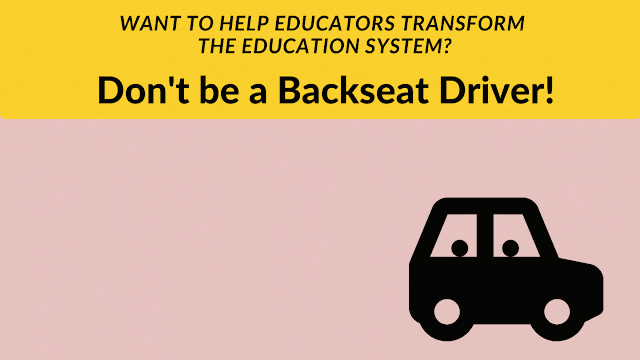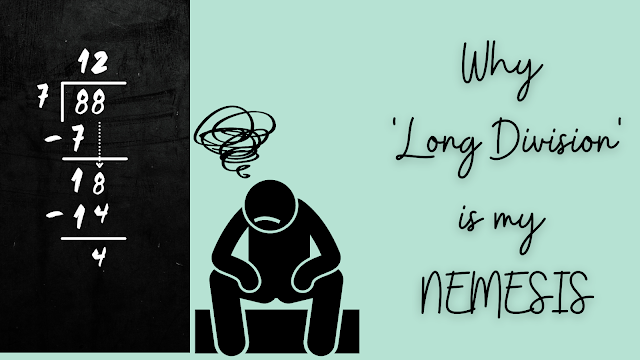The Idea: Both teachers and students are motivated by the same fundamental attributes: Competence, Relatedness, Purpose, and Autonomy. By establishing professional and learning environments that facilitate the growth of these core attributes, we can cultivate communities of motivated educators and students.
Last year, when we returned to School in Mumbai after 2 full years of pandemic online schooling, we noticed an increased incidence of teacher burnout. This prompted me to read more deeply about teacher burnout and motivation. I found it intriguing that studies on burnout and motivation for both educators and learners highlighted similar fundamental concepts.
WHAT MOTIVATES TEACHERS? WHAT MOTIVATES STUDENTS?
What drives us to act? To solve problems? To work towards achieving our goals?
According to research, the optimal approach to motivate people is by cultivating emotions that are exclusive to humans (as opposed to robots or machines). These include experiencing competence, finding purpose, feeling a connection to the community, and feeling a sense of autonomy.
At its core, both, Students and Teachers are motivated by the same things:
Competence: When we feel competent or effective in our roles/ work
Relatedness: When we feel we belong and are connected to others in a positive way
Purpose: When we feel we are working on something worthwhile
Autonomy: When we have a degree of control over our actions
This list draws from the ‘Self-Determination Theory (SDT)’, a theory of motivation and personality development developed by Edward Deci and Richard Ryan. SDT explains that individuals are motivated by competence, relatedness and autonomy. It also addresses purpose as something closely related to autonomy. Self-Determination Theory (SDT) of motivation has been extensively validated through research over the past few decades. And it has been validated for both - Students and Teachers in a variety of contexts.
Here is a visual summary of What motivates Teachers and Students, and the strategies we might put in place to achieve it:
A HIERARCHY OF MOTIVATORS
Before we explore these motivating factors, here are some points worth noting:
- Firstly, all of these motivating factors rely on the assumption that basic "hygiene factors"are in place - such as fair pay, adequate working conditions and other physiological needs such as physical health, nutrition, sleep, and a positive home environment. Without these basic needs being met, other higher order motivating factors may be ineffective.
- Secondly, competence is the strongest predictor of motivation. When we feel competent in our roles, it can be highly motivating. Conversely, constant failure in our work as a teacher or student can be demotivating and disengaging. Success creates a self-perpetuating cycle of learning by boosting self-efficacy, increasing motivation to achieve goals, and building confidence to take on challenging work, ultimately leading to greater competence and increased motivation. Further, Competence serves as a foundational attribute upon which other factors such as autonomy, relatedness, and purpose can be nurtured. For instance, as a teacher, if I lack competence, it will be difficult for me to effectively exercise autonomy or feel a sense of belonging and significance within my school community.
- Finally, after these basic physiological and psychological needs are taken care of, NOBODY WANTS TO BE A ROBOT.
NOBODY WANTS TO BE A ROBOT
Extrinsic Motivators aren’t inspiring or enduring
Once basic needs are met, and core competencies are in place, the role of extrinsic motivators are seriously limited. Taking action because of fear of punishment; fear of disappointing someone; anticipation of a reward; anticipation of praise. All of these are versions of extrinsic motivators, where we are ‘motivated’ to take action because of some external factors like fear or rewards. While sometimes these can ‘motivate’ us to take action towards a goal, they are especially ineffective when you are looking for motivation that endures and/or inspires.
Intrinsic Motivation comes from being deeply human - feeling, experiencing, creating
If we are looking to motivate individuals in ways that are enduring and even self-perpetuating, we need to look beyond carrots and sticks and find ways to motivate intrinsically.
We are motivated when we feel the joy and fulfilment or ‘flow’ that comes from moving beyond competence to complete absorption in an activity.
We are motivated to act when we feel connected to individuals in a community and shared goals.
We are motivated to act when we find meaning and purpose in our work.
We are motivated when we are inspired to take charge towards turning our creative ideas into reality.
Not when we mundanely follow a set of instructions that we are asked to blindly follow.
Not when we are working in a robotic environment without any connection to others.
Not when we work on something boring that we absolutely do not care about.
Not when we follow orders and have no say in what we do, or how we do it.
Our greatest sources of motivation stem from our unique humanity, which endows us with extraordinary capabilities such as experiencing flow, connection, purpose, and agency that are exclusive to humans, and impossible for robots to replicate.
This also means that if your School has a system that primarily motivates with extrinsic factors or treats your team like they are robots - with no space for creativity, connection, purpose or autonomy - you must act now to change that!
As a School Leader, I've been guided by the Competence-Relatedness-Purpose-Autonomy model for motivation. I'm passionate about sharing this approach with others who can also benefit from it, which is why I wrote this article. Let's unlock our human superpowers and thrive together!
Appendix:
Below is a list of examples of how these motivating factors might be cultivated for students and teachers.
Building Competence | Teachers | Students |
Implement Strong Teaching and Learning | Strong, Ongoing Professional Development that addresses needs of novice and experienced teachers and develops their skills effectively Teachers must have essential pre-requisites for example competence in the language of instruction or their subject area. It is often beyond the scope of a school to address these through in-service PD and so the challenge of ‘teaching’ may not be just right for a teacher without core foundational knowledge in these areas
| Strong teaching and pedagogical practices across the school that result in effective learning for students Equitable education that ensures all students have the opportunities to build strong foundational skills like literacy, numeracy, self-regulation etc. irrespective of their background
|
Provide Opportunities to practice and receive feedback | | |
Set appropriately challenging goals, monitor progress, use it to reflect & improve | Leaders must do their best to have teachers work in roles or set goals that are well matched to their skills. Novice teachers and experienced teachers may be able to take on different levels of challenge. School leaders can also help teachers prioritise their core responsibilities by managing factors that compete for time like administrative responsibilities, meetings, duplication of work etc.
| One size does not fit all and so it is important for teachers to pick appropriate goals for students based on prior knowledge and skills, pace and current levels of the students. If the goals are too hard it may lead to failure irrespective of effort and if they are too easy, students may not feel challenged enough to stay engaged Scaffolding during the learning process can give students the required support they need while learning
|
Create Peer Learning Communities to support practical learning and problem solving | | |
Building Relatedness | Teachers | Students |
Create a Safe, supportive, inclusive environment | School / Organizational culture must make teachers feel safe, included and supported at School. Teachers feel secure enough to reach out for support and peers reach out
| School / Classroom culture must make students feel safe, included and supported at School. Systems like Multi-tiered Systems of Support can help ensure that ALL students get the support they need during their learning journeys
|
Opportunities for individuals to connect and come together as a community
| | |
Building Purpose | Teachers | Students |
Communicating Shared Vision and Purpose | | |
Create opportunities for meaningful work | Leaders must work hard at protecting teachers time to reduce time on less important administrative work to allow them to focus on important work related to teaching and learning Provide opportunities for teachers to grow in their careers and pursue different professional pathways
|
|
Help individuals recognise the positive impact of their work on self and community |
|
|
Providing Autonomy | Teachers | Students |
Distribute Leadership to share power | | |
Create opportunities for Self-directed Learning | Invest time in understanding teachers long term goals and aspirations so that we might provide them with choices or offer a range of roles that allow them to fulfill their responsibilities in the organization but also align with their personal goals and interests Help teachers track their learning and receive feedback on their performance so they can use it to improve their own learning process
| Include project-based work, team work that provide students with opportunities to exercise agency and collaborative decision making Help students track their progress and receive feedback on their performance so they can use it to improve their own learning process
|
Offer choices in Goals and/ or how they might be achieved | | |
References
Gagné, Marylène, and Edward L. Deci. "Self‐determination theory and work motivation." Journal of Organizational behavior 26.4 (2005): 331-362.
Pink, Daniel H. Drive: The surprising truth about what motivates us. Penguin, 2011.
National Academies of Sciences, Engineering, and Medicine. How people learn II: Learners, contexts, and cultures. National Academies Press, 2018.
Bureau, Julien S., et al. "Pathways to student motivation: A meta-analysis of antecedents of autonomous and controlled motivations." Review of Educational Research 92.1 (2022): 46-72.
Guay, Frédéric. "Applying self-determination theory to education: regulations types, psychological needs, and autonomy supporting behaviors." Canadian Journal of School Psychology 37.1 (2022): 75-92.
Collie, Rebecca J., and Annemaree Carroll. "Autonomy-pressure profiles among teachers: Changes over a school term, leadership predictors, and workplace outcomes." Teaching and Teacher Education 124 (2023): 103998.

.png)
.png)



Comments
Post a Comment